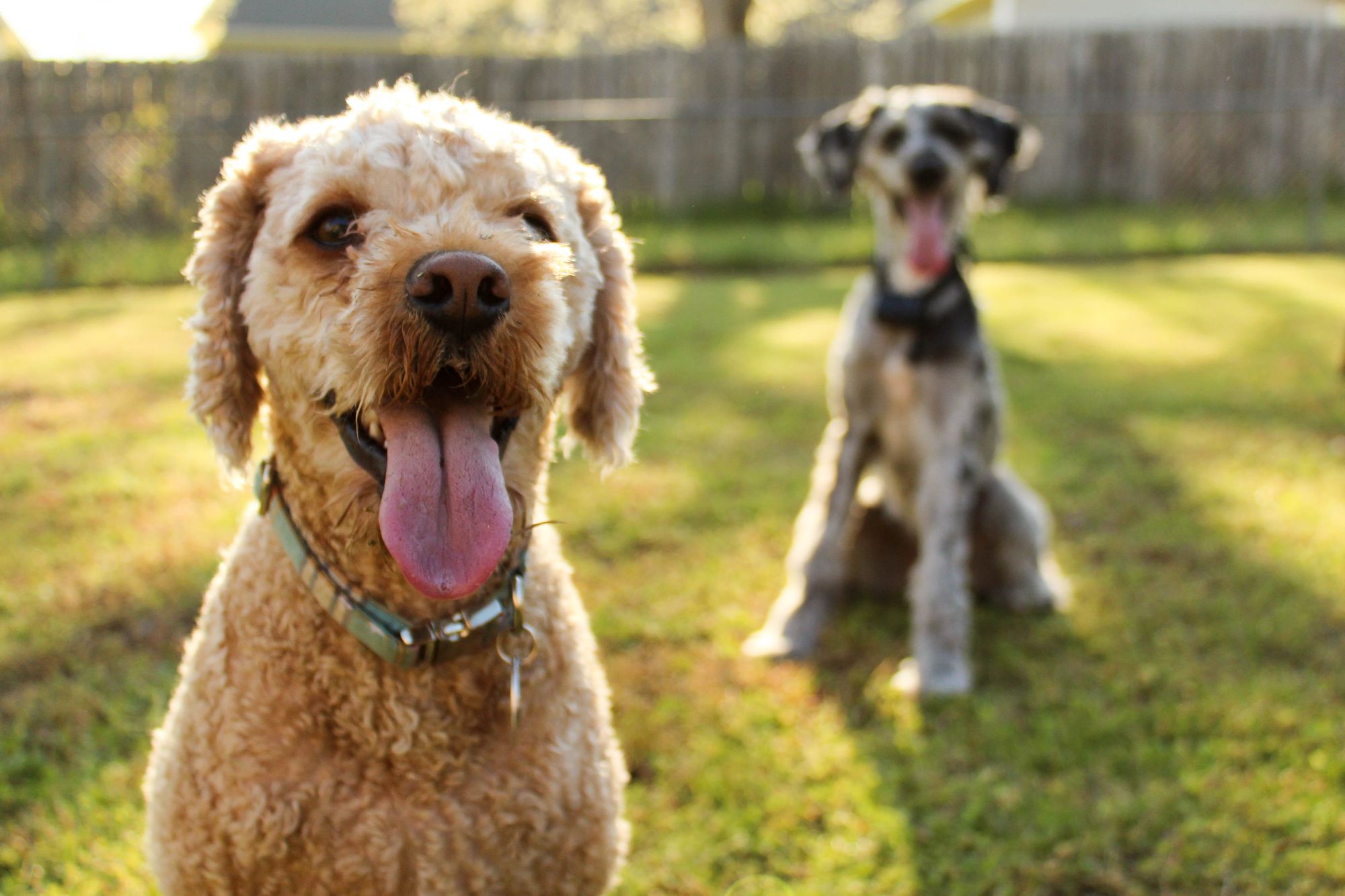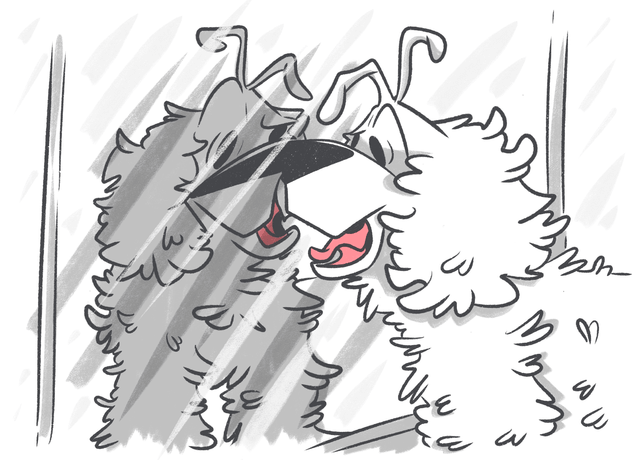Your dog’s gums, lips, and tongue should be a pink shade, somewhere between salmon and bubblegum pink. The color will vary from dog to dog, especially with different fur colors, but one thing they should never be is bright red. If they are, your dog likely has a medical issue.
Let’s find out what red gums, lips, and tongue mean in dogs and what you should do about it.
Stop Googling - Ask a Real Vet
Content:
- Red Gums on Dogs
- Red Bump on Dog Lip
- Bright Red Tongue in Dogs
- What Does It Mean When a Dog Has Red Lips
- Lips in Dogs Are Bright Red
- Should You Go to the Vet If Your Dog Has Red Gums Lips or Tongue
Red Gums on Dogs
Red gums can have several underlying causes, from minor trauma (running into a door, for example) to major disease. You cannot diagnose the problem from sight alone. For some dogs, the underlying cause can have nothing to do with the mouth or oral health at all.
Read more: Pale Gums in Dogs: Causes, Symptoms, and Treatment
Abnormal Molar Development
This oral condition can affect humans, dogs, and other animals and happens when the teeth do not grow as they should (hence ‘abnormal’). In brachycephalic breeds such as Pugs, American and French Bulldogs, Boxers, and Boston Terriers, there isn’t enough space for normal growth. As a result, your pet can experience:
- No interest in food or water;
- Irregular position of teeth;
- Pain-associated behavior: snapping, crying, no interest in favorite humans, etc.;
- Red, swollen, painful gums;
- Tooth root exposure;
- Facial bone loss (in more severe cases).
Periodontal Disease
The first stage of doggy periodontal disease (also known as gum disease) comes with swollen and red gums, halitosis (stinky breath), and blood in the mouth or around the gums. The latter is commonly caused by eating, especially dry food, and chewing toys, furniture, bones, etc.
Gum disease is problematic in dogs because symptoms are often virtually nonexistent in the early stages. Thankfully, regular vet checks and doggy teeth cleaning will help keep it at bay.
Oral Cancer
This type of cancer is rare in younger pups, according to PetMD study, but it is aggressive (fast-growing) and tends to quickly spread to other parts of the body.
Typically affecting the gums or roof of the mouth, the redness tends to happen when swelling or the growth of a mass occurs.
The symptoms of early cancer heavily depend on where the cancer itself is, how far along it is (stage), and what type of cancer it is. Fibrosarcoma, squamous cell carcinoma, and melanoma are the most common dog oral cancer types.
Red Bump on Dog Lip
Insect bites and stings, snake bites, wood splinters, and other foreign objects can cause your dog to have a red bump. Other causes include oral cancers and trauma, such as running into a coffee table.
It’s common for dogs to have benign and non-cancerous tumors on their lips. It’s a high-use area for dogs. They lick their lips often. Other causes of a red bump on your dog’s lip can include:
Bright Red Tongue in Dogs

A bright red tongue could indicate a variety of doggy health conditions, such as dehydration or overheating, stomatitis (oral inflammation), high blood pressure (hypertension), or an infection. It could also be a sign of trauma, such as a burn or wound. If you have a Petcube Camera in the house, it’s worth watching the footage back to check for trauma, consumption of forbidden foods, etc.
One very serious condition you should be aware of is hypoxia.
Hypoxia
If the tongue is red (or pink) and has tinges of purple, your pet might be suffering from a condition called hypoxia, which essentially means low oxygen in the body. If the body is low on oxygen, the brain will be, too. A lack of oxygen to the brain is a life-threatening situation that requires urgent diagnosis and treatment.
Hypoxia comes with a range of other symptoms, including a fast heartbeat, struggling to breathe, coughing, fast breathing, retching, not wanting to play or exercise, and collapsing.
What Does It Mean When a Dog Has Red Lips
Assuming your dog hasn’t managed to get inside a makeup bag and apply some dashing red lipstick, red lips on dogs aren’t usually life-threatening. You should still take your pet to the vet to have it checked out.
Common reasons why dogs’ lips turn red are:
Lip Fold Dermatitis
Flat-faced dogs are at a higher risk of suffering from lip fold dermatitis, which affects the folds of the skin and is sometimes referred to as skin fold dermatitis. Pugs, French Bulldogs, English Bulldogs, and other flat or squashed-face breeds are more prone, according to the Royal Veterinary College study, with the English Bulldog carrying the number one spot.
Lips are the most commonly affected areas, but dermatitis is also found on eye folds, tails, nasal folds, and female genitals. These areas get less ventilation than others, and they also hold on to moisture more. This allows bacteria and yeast to grow, which can then develop into infections.
Stomatitis
Cold sores, canker sores, allergies, some cancer treatments (including radiotherapy), gum disease, autoimmune disease, dental issues, side effects of medications, and several other things can cause stomatitis. This is the scientific name for general or specific discomfort in the mouth.
Symptoms can vary depending on the cause. Cold sores can come with a fever, but canker sores usually don’t. The underlying cause will also play a huge factor. Hormone imbalances, vitamin deficiencies, viral or bacterial infections, diabetes, bladder stones, weight loss, stress, and a poor diet can all contribute to oral issues, which will in turn bring their own set of symptoms.
Lips in Dogs Are Bright Red

One of the most common causes of lip color changes in dogs is allergies. They can turn from their usual shade of pink to a much brighter or deeper shade, and some may even turn bright red.
You should always make notes about changes in your dog’s appearance or behavior, allowing you to give your vet a true idea of what’s been going on. Fast-growing lumps, lumps on senior dogs, ulcerated lumps, or lumps that cause your dog discomfort or inconvenience require urgent medical attention. Reddening often comes first before swelling and other symptoms make themselves obvious.
Read more: Why Is Your Dog Licking Lips All The Time?
Should You Go to the Vet If Your Dog Has Red Gums Lips or Tongue
Yes, you should go to the vet if your dog exhibits red or discolored gums, lips, and/or tongue. Although it could be a sign of something minor and easily resolved, it could also be a symptom of a potentially life-threatening condition. Even your vet won’t know what the problem is until they’ve performed diagnostic tests such as physical examinations, blood tests, urine and feces samples, and more.
If in doubt, have a chat with one of Petcube’s 24/7 vets. It’s just one part of the package when you sign up for the Emergency Fund Service, which provides up to $3,000 of emergency coverage for just $29 per month to take the hassle out of being a pet parent.
Was this article helpful?
Help us make our articles even better









